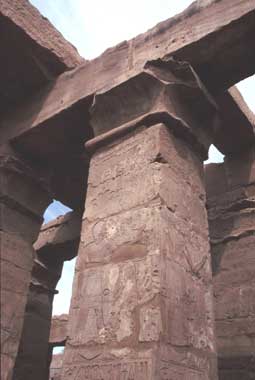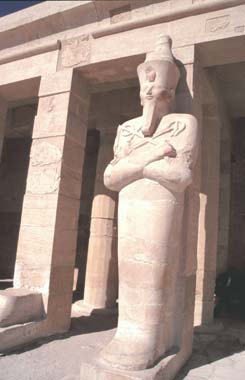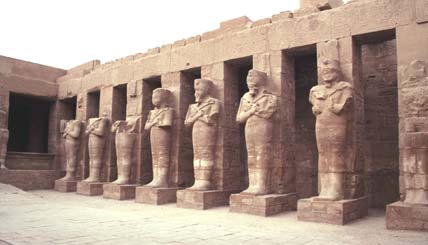|
Ancient
Egypt by Sjef Willockx |
||
|
In most cases, pillars were not supplemented with extra (constructional) elements. Those that sometimes were used are the following:
This is a pillar in the festival temple of Amenhotep II (18th dynasty) in the precinct of Amun, at Karnak. Here you see a concave cornice, added as crowning element to the pillar. (The transition is formed by a torus molding). Apart from this building, no further examples of this construction are known. Another, more common adjunct to pillars is the Osirian statue. We encounter this frequently in the royal mortuary temples of the New Kingdom. This is one of the few Osirian statues from the mortuary temple of Hatshepsut (18th dynasty) at Deir el Bahri that could be reconstructed. The smooth lines of the face border on mannerism, but the delicate rendering of the body shows great sensitivity.
Very different are the heavy, gloomy statues of Ramesses III in his "bark shrine" (with the size of a small temple) in the precinct of Amun at Karnak. It is an impressive sight since so many of these statues still are reasonably complete. The original atmosphere of the somber court is well preserved.
(The use of pillars as the sole type of support in a building was rather
rare. More often they were used together with columns. In some of
the pictures that follow, with examples of columns, you can also see
pillars.) Back to start Previous Next Thumbnails
|
|
|
|
|
All materials on this site are protected by copyright. All copyright by Sjef Willockx, unless otherwise indicated. |


